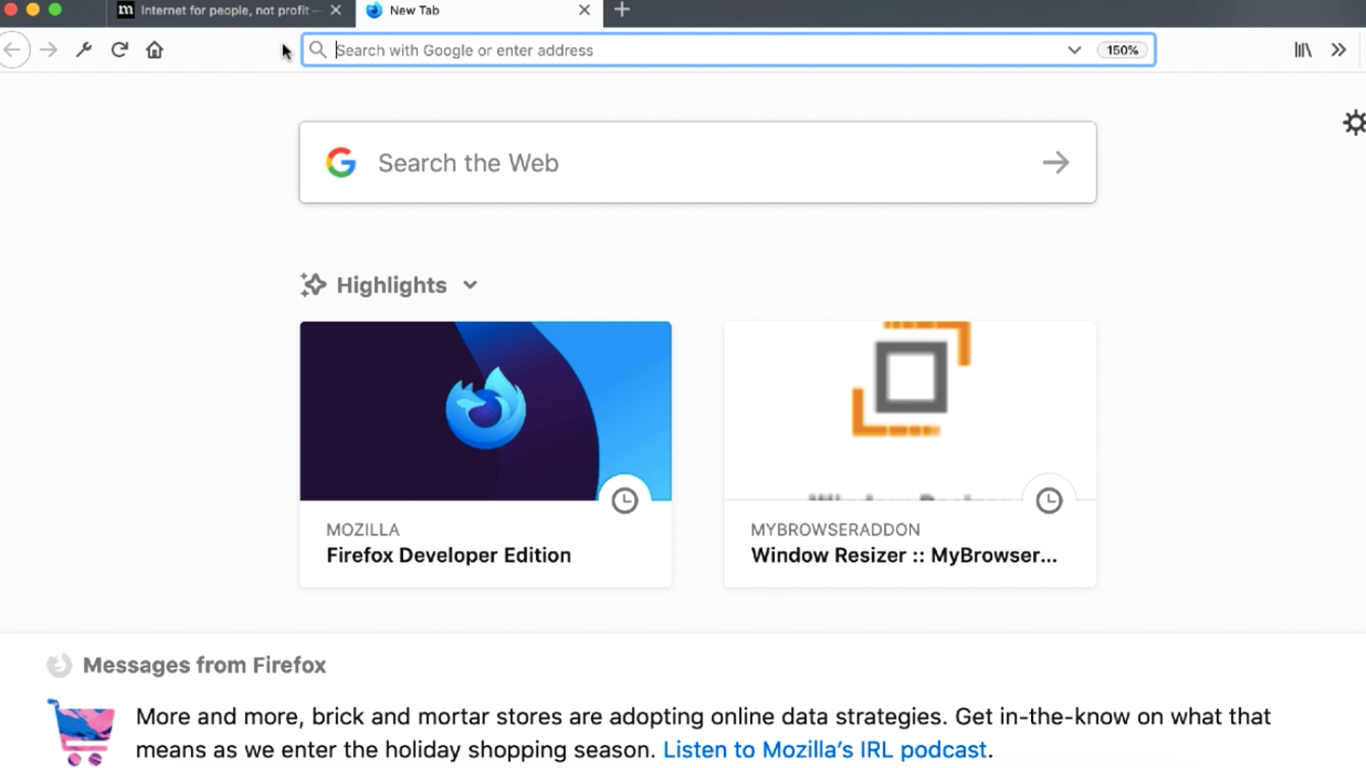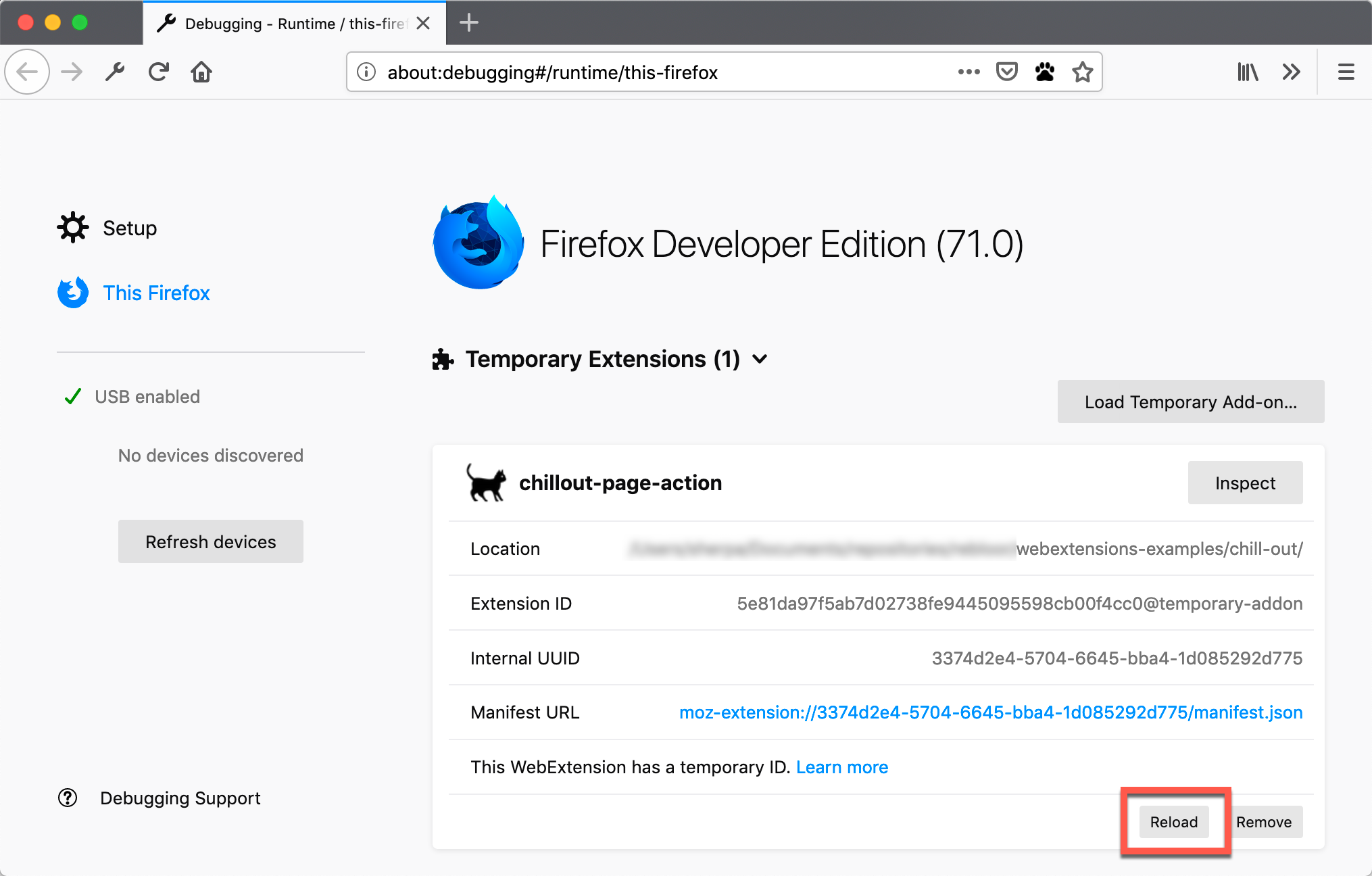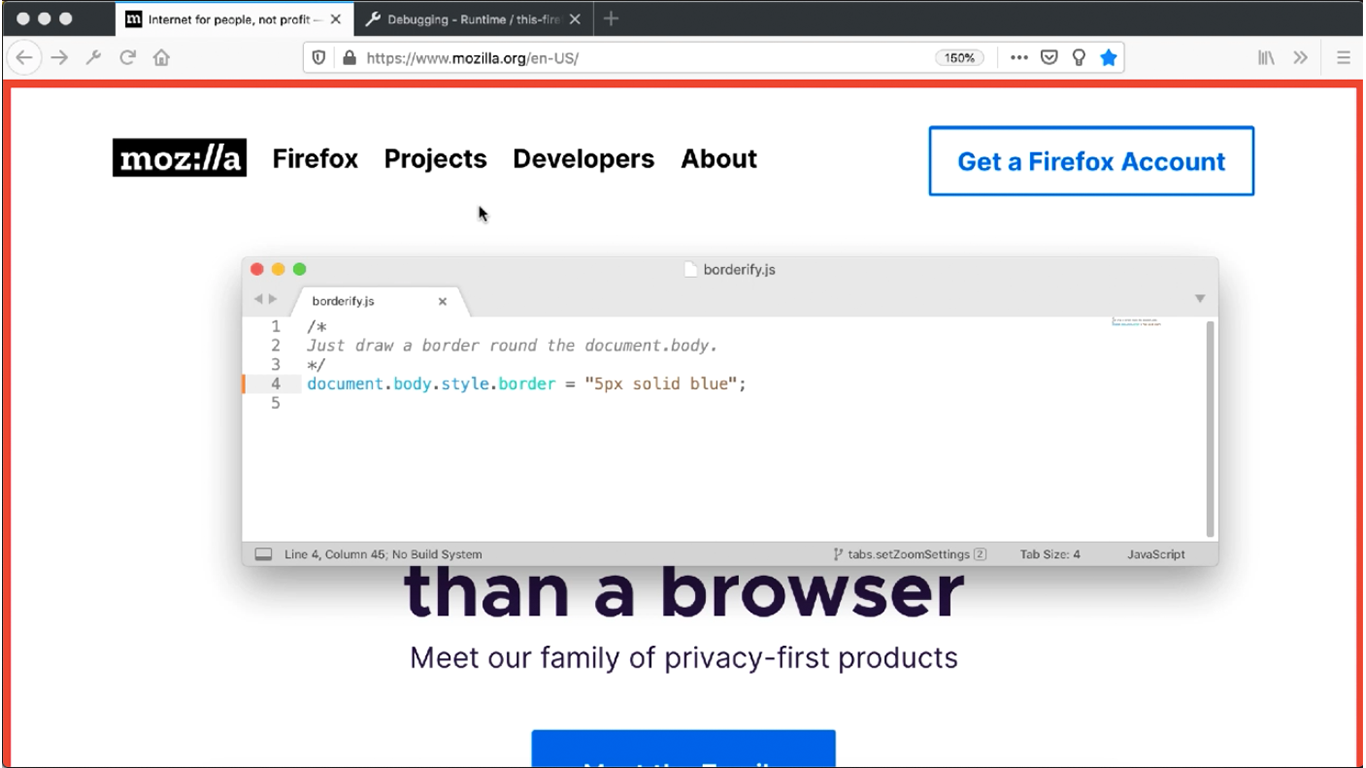Temporary installation in Firefox
This article describes how you can temporarily install an extension in Firefox for testing and debugging. The extension stays installed until you remove it or restart Firefox.
For extension development, automate the processes described on this page by using web-ext.
Note that this is not how end-users should install add-ons in Firefox. End-users install add-ons by downloading and opening packaged add-ons that have been signed by Mozilla. To learn how you get an add-on packaged and signed, see Publishing your extension.


